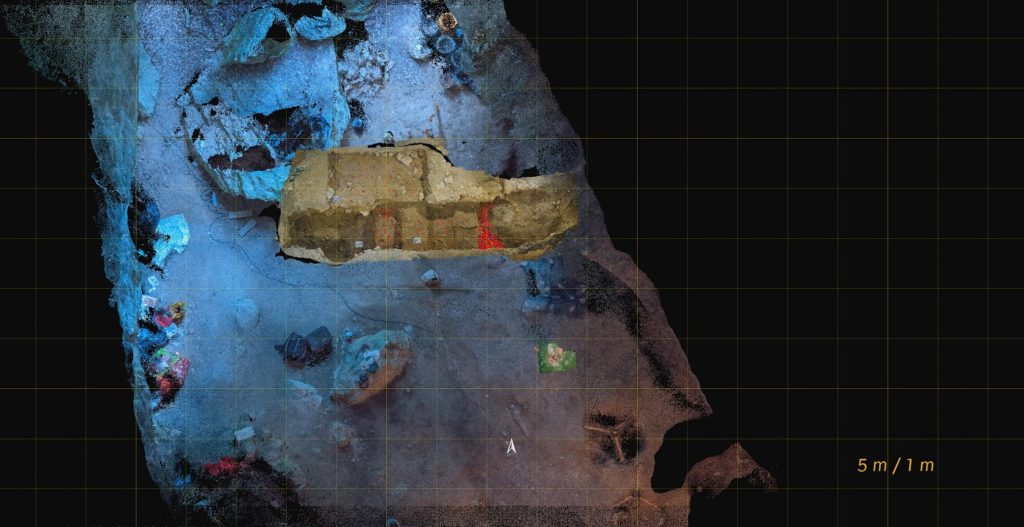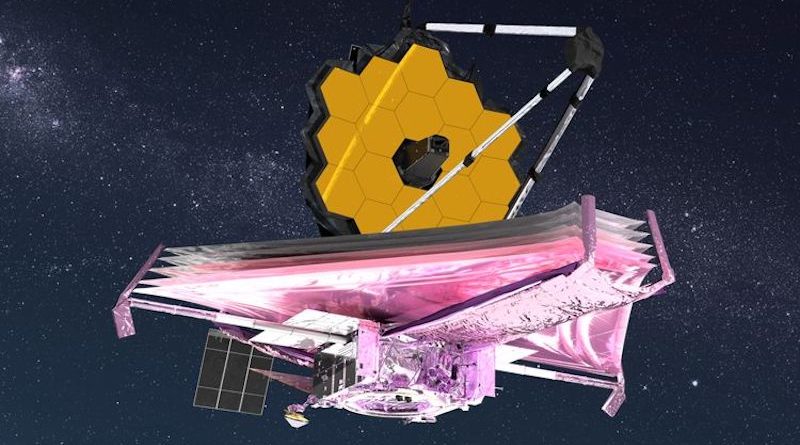Daily Business Report: Monday, Dec. 27, 2021
James Webb Space Telescope begins million-mile journey
NASA’s James Webb Space Telescope, built in partnership with Northrop Grumman Corporation, successfully launched on Christmas Day from the European Space Agency’s (ESA) Spaceport in Kourou, French Guiana aboard an Ariane 5 rocket.
Approximately 30 minutes after launch, Webb detached from the Ariane 5 rocket, marking the beginning of a million-mile journey and the start of a two-week complex deployment process to unfold the spacecraft in preparation for arrival at Lagrange Point 2 (L2).
“Since the dawn of the space age, NASA, international partner agencies and industry partners, together with Northrop Grumman, have been defining what is possible in space science and exploration,” said Kathy Warden, chairman, chief executive officer and president, Northrop Grumman. “Over the next few weeks, the James Webb Space Telescope will transform into an awe-inspiring scientific tool that will usher in a new era in human discovery.”
During the journey to L2, Webb will convert from its stowed position in which it left Earth to the configuration that will allow it to see light coming from the earliest stars to shine in the Universe. Part of this journey is to unfold the tennis court-sized, five-layer sunshield around the sensitive mirrors that allow Webb to take pictures and collect data that will come back to Earth for scientific review. Once operational, Webb will explore farther than ever before into the cosmos, looking back 13.5 billion years.
TOP ILLUSTRATION: Artist rendering of the James Webb Space Telescope.( Credit: NASA GSFC/CIL/Adriana Manrique Gutierrez)

UC San Diego researchers take a digital
snapshot of an ancient infant burial site
By Xochitl Rojas-Rocha | UC San Diego
Researchers based at the UC San Diego Qualcomm Institute (QI) and Jacobs School of Engineering have digitally recreated, in painstaking detail, the oldest documented European burial of an infant female. The interactive 3D excavation site, included last week in an article with Scientific Reports (Nature), is being used by an international team to learn more about burial practices, gender-based status and other social behaviors of ancient hunter-gatherer groups.
Archaeologists discovered the burial site in 2017 during an ongoing excavation at Arma Veirana, a cave in modern-day Italy. Led by the University of Colorado, Denver and the University of Colorado School of Medicine, the team discovered that the infant, nicknamed “Neve” by researchers, died at 40-50 days old approximately 10,000 years ago, during the early Mesolithic period. Buried with her were more than 60 pierced shell beads, four pendants and an eagle-owl talon.
Prior to advances in 3D scanning technology, archaeologists would have had to go to lengths to document an intact excavation site, including removing entire blocks of substrate for closer study. Now, UC San Diego’s interactive 3D reconstruction of the excavation offers archaeologists a reliable record that can be studied in perpetuity.
The world’s biggest exporters of Christmas decorations
Visual Capitalist
Billions of dollars worth of Christmas decorations are exported around the world each year. And while they adorn many homes across the globe, you may be surprised to know that a majority of these decorations are manufactured in just a handful of countries.
Using data from the UN Comtrade Database, this festive visualization highlights the world’s top exporters of Christmas decor.
China accounts for 87 percent of global Christmas decoration exports (excluding candles, electric lighting sets, and natural Christmas trees), with a total export value of $6.62 billion in 2020.
China’s market share dwarfs its competitors. Netherlands comes a distant second, capturing only 3.95 percent of the market, while Poland is third with just 0.91 percent.
Another interesting fact we can extract from the data is that the top 10 countries own a 96.91 percent share of the Christmas decoration export market, which leaves just 3.09 percent of the market to the other 185 countries around the globe.
Housing Commission gets 50 new vouchers to help
pay rent for veterans experiencing homelessness
The San Diego Housing Commission (SDHC) has been awarded 50 additional Veterans Affairs Supportive Housing (VASH) vouchers to help pay rent for veterans experiencing homelessness in the City of San Diego, who will also receive supportive services from the U.S. Department of Veterans Affairs (VA).
“More VASH vouchers mean more opportunities to help veterans move from the streets or shelters into permanent rental homes of their own with the supportive services they need,” SDHC President and CEO Richard C. Gentry said. “The San Diego Housing Commission looks forward to continuing to collaborate with the VA San Diego Healthcare System to have a positive impact on the lives of those who served our country but are struggling to get by today.”
The U.S. Department of Housing and Urban Development (HUD) awarded the 50 new VASH vouchers to SDHC. The estimated annual value of the new vouchers is $623,982.
Including the new vouchers, HUD has awarded 1,285 VASH vouchers to SDHC since 2008.
No more annual flu shot? Scripps Research and
collaborators find new target for universal flu vaccine
Scientists at Scripps Research, University of Chicago and Icahn School of Medicine at Mount Sinai have identified a new Achilles’ heel of influenza virus, making progress in the quest for a universal flu vaccine.
Antibodies against a long-ignored section of the virus, which the team dubbed the anchor, have the potential to recognize a broad variety of flu strains, even as the virus mutates from year to year, they reported Dec. 23, 2021 in the journal Nature.
“It’s always very exciting to discover a new site of vulnerability on a virus because it paves the way for rational vaccine design,” says co-senior author Andrew Ward, professor of integrative structural and computational biology at Scripps Research. “It also demonstrates that despite all the years and effort of influenza vaccine research there are still new things to discover.”



